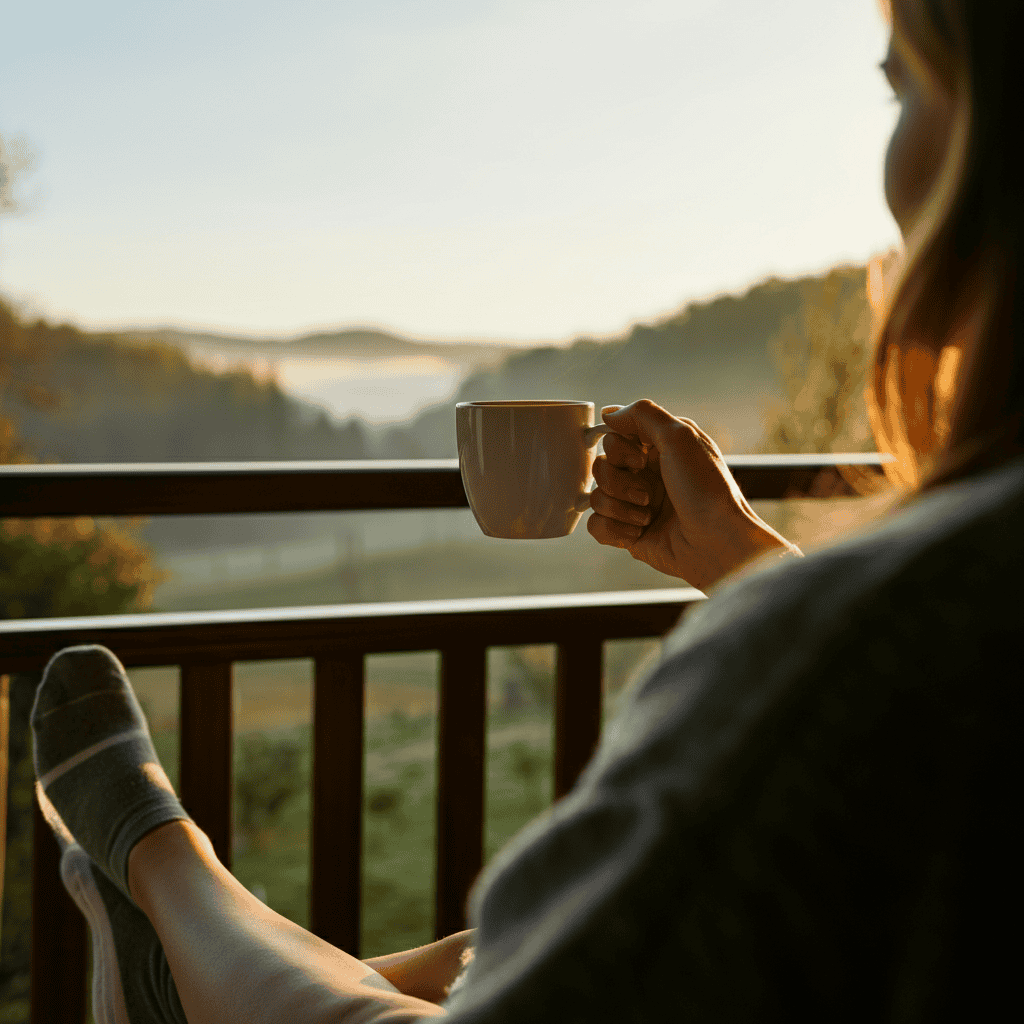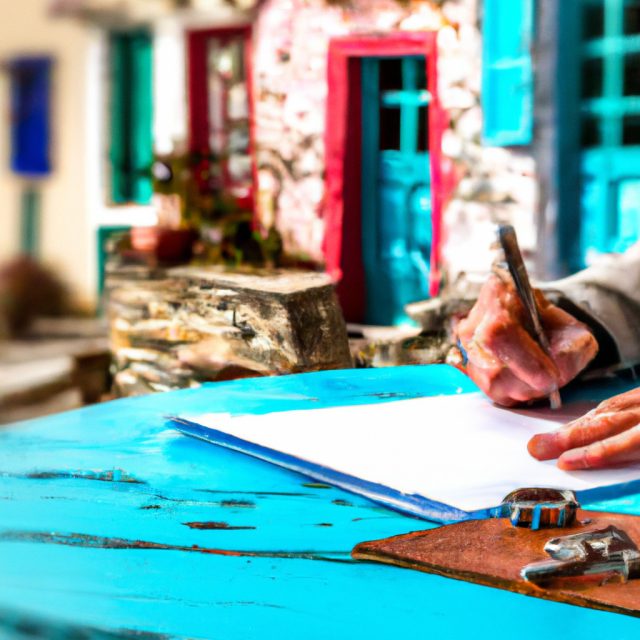The Un-Googled Map: Rediscovering the World One Moment at a Time
Picture your last vacation. Was it a breathless sprint from one landmark to another, a blur of selfies and crowded queues, all meticulously planned to maximize every single minute? Did you return home needing a vacation from your vacation? If this sounds familiar, you’re not alone. In our hyper-connected, efficiency-obsessed world, we’ve turned travel into another item on our to-do list—a series of boxes to be ticked. But what if there was another way? A way to travel that leaves you not exhausted, but replenished? A way that fosters genuine connection instead of fleeting glances?
Welcome to the world of slow travel. It’s not about traveling in slow motion; it’s a revolutionary mindset shift. It’s the conscious decision to trade a frantic itinerary for immersive experiences, to prioritize depth over breadth, and to understand that the true magic of a place is often found in the quiet moments between the must-see sights.
This guide is your invitation to unpack not just your suitcase, but the very idea of what travel should be. It’s a deep dive into the art of slowing down, connecting deeply, and returning home with more than just souvenirs—returning home with stories, relationships, and a renewed sense of wonder.
The Philosophy of Slow: What It Is (and What It Isn’t)
At its core, slow travel is an offshoot of the broader “Slow Movement,” which began with the Slow Food movement in Italy in the 1980s as a protest against the opening of a McDonald’s in Rome. It championed local culinary traditions and a more mindful approach to eating. This philosophy has since expanded to almost every aspect of life, including travel.
It’s Not About Being Lazy; It’s About Being Present
A common misconception is that slow travel means doing nothing. On the contrary, it’s about doing things with intention. Instead of seeing five cities in five days, a slow traveler might spend five days exploring one neighborhood of one city. It’s about:
- Connection over Collection: Focusing on connecting with the local culture, people, and food rather than collecting passport stamps or Instagram photos.
- Immersion over Observation: Participating in daily life—shopping at the local market, learning a few phrases of the language, taking a cooking class—rather than just observing it from a tour bus window.
- Spontaneity over Scheduling: Leaving room in your schedule for unexpected discoveries, for getting lost on purpose, for following a cobblestone alley just to see where it leads.
“The whole object of travel is not to set foot on foreign land; it is, at last, to set foot on one’s own country as a foreign land.” – G.K. Chesterton
The Transformative Benefits of Traveling Slowly
Adopting a slow travel mindset does more than just change your itinerary; it transforms your entire experience, offering profound benefits for your well-being, your wallet, and the planet.

1. Deeper Cultural Immersion and Authentic Connections
When you stay in one place longer, you move beyond the surface-level tourist experience. You start to recognize faces, from the baker who sells you your morning pastry to the artist at the local gallery. You have time for longer conversations, to hear personal stories, and to understand the nuances of the local culture in a way that is impossible on a whirlwind tour. You become a temporary local, not just a visitor.
2. Reduced Travel Burnout and Enhanced Well-being
The stress of traditional travel is real: the frantic packing and unpacking, the rush to catch planes and trains, the pressure to “see everything.” Slow travel eliminates this. By reducing transit time and logistical stress, you give your mind and body the space to truly relax and rejuvenate. You can establish a comfortable routine, sleep in without an alarm, and savor your morning coffee without worrying about the next item on your checklist.
3. It’s More Sustainable and Responsible
Slow travel is inherently more eco-friendly. Fewer flights mean a smaller carbon footprint. Staying in one place means you’re more likely to support small, local businesses—family-run restaurants, independent shops, and local artisans—rather than large international chains. This ensures your travel dollars directly benefit the community you’re visiting.
4. Significant Cost Savings
While it seems counterintuitive, traveling for longer can often be cheaper. Transportation is one of the biggest travel expenses; by staying put, you slash those costs. Furthermore, long-term accommodations like apartment rentals are often significantly cheaper per night than hotels. You can also save a huge amount of money by cooking some of your own meals with fresh ingredients from the local market—an authentic cultural experience in itself.
5. The Joy of Unexpected Discoveries
Some of the most cherished travel memories are born from unplanned moments. The tiny, family-run trattoria you stumble upon down a side street. The local festival you didn’t know was happening. The afternoon you spend chatting with a shopkeeper who invites you for tea. A packed itinerary leaves no room for this magic. A slow travel approach invites it in.
Your Practical Guide to Planning a Slow Travel Adventure
Ready to trade your checklist for a compass? Planning a slow trip requires a different approach, one focused on flexibility and intention.
Step 1: Choose Your Destination Wisely
Not all destinations are created equal for slow travel. Look for a “base” location that offers:
- Livability: Access to grocery stores, cafes, parks, and a comfortable living environment.
- Good Local & Regional Transit: A place where you can easily explore without a car, using buses, trains, or your own two feet.
- Day-Trip Potential: A central hub from which you can explore surrounding towns, villages, and natural attractions without having to pack up and move every few days (the “hub and spoke” model).
Step 2: Rethink Your Accommodation
For stays longer than a week, ditch the hotel. Consider options that offer a taste of local life:
- Apartment Rentals (Airbnb, Vrbo): The classic slow travel choice. Having a kitchen and a living space makes you feel at home and saves money.
- House-sitting: Platforms like TrustedHousesitters allow you to stay in someone’s home for free in exchange for looking after their pets and property.
- Work Exchanges (Workaway, Worldpackers): Offer a few hours of work a day at a hostel, farm, or family home in exchange for free accommodation and food.
Step 3: Pack Smart, Not Heavy
Since you’ll have a home base, you can wash your clothes. Pack a versatile, capsule-style wardrobe with items you can layer and mix and match. Prioritize comfort, especially comfortable walking shoes. Leave room in your suitcase for the unique items you’ll want to bring back from local markets and artisans.
Step 4: Craft a “Non-Itinerary”
This is the most crucial mental shift. Instead of a day-by-day schedule, create a loose list of intentions or a “wish list.” It might look something like this:
- Find the best cappuccino in the neighborhood.
- Spend an entire afternoon reading in a park.
- Learn to cook one local dish.
- Visit the main museum on a weekday when it’s less crowded.
- Take a day trip to that coastal village someone recommended.
This approach provides a gentle structure while leaving ample space for spontaneity.
Mastering the Slow Travel Mindset on the Road
Once you’ve arrived, the real practice begins. Here’s how to lean into the slow travel mindset day by day.
- Walk Everywhere: Walking is the ultimate slow travel tool. It attunes your senses to the rhythm of the city—the smells, sounds, and textures you miss when you’re underground on a metro or behind the glass of a taxi.
- Engage Your Senses: Put your phone away. Sit at a cafe for an hour and just watch the world go by. Notice the architecture. Listen to the cadence of the local language. Truly taste the food.
- Learn a New Skill: Nothing immerses you in a culture faster than learning from a local. Take that pottery class, the language lesson, the guided tour of the market with a local chef. These are the experiences that stick with you.
- Embrace Boredom: In a world of constant stimulation, we fear being bored. But boredom is often the precursor to creativity and observation. Allow yourself to have an afternoon with nothing planned. See what your mind wanders to.
- Talk to Strangers: Learn a few key phrases (“Hello,” “Thank you,” “This is delicious”) and use them. Ask the fruit vendor for their recommendation. Compliment the cafe owner on their coffee. A simple, friendly interaction can change your whole day.
Your Journey Starts Now
Slow travel isn’t an exclusive club for retirees or long-term nomads. It’s a philosophy that can be applied to any trip, whether it’s a month-long sabbatical or a weekend getaway. It’s about choosing one neighborhood to explore deeply instead of trying to see an entire city. It’s about choosing one amazing, leisurely meal over three rushed ones.
The next time you plan a trip, challenge yourself. Cut your itinerary in half. Double your time in one place. Leave one entire day completely unplanned. Let go of the pressure to “do it all” and instead, give yourself permission to simply be. You might just find that in slowing down, you discover a richer, more meaningful, and far more memorable way to see the world.
Learn more: Escape the Crowds: 7 Hidden Villages in Europe You Need to Visit














